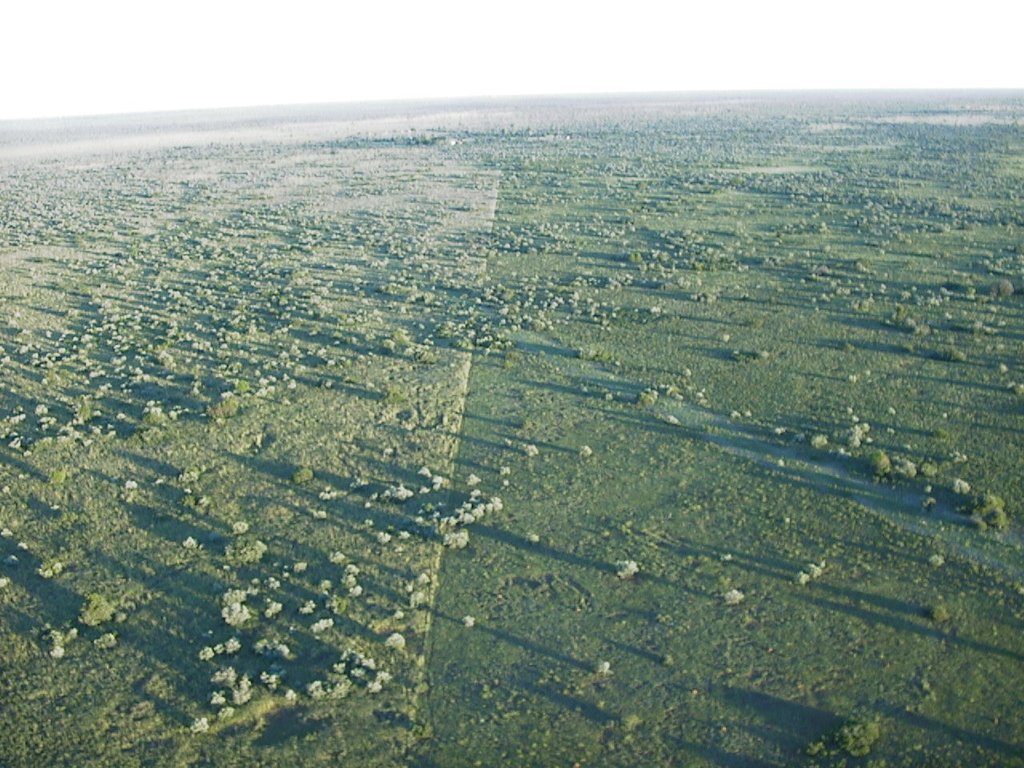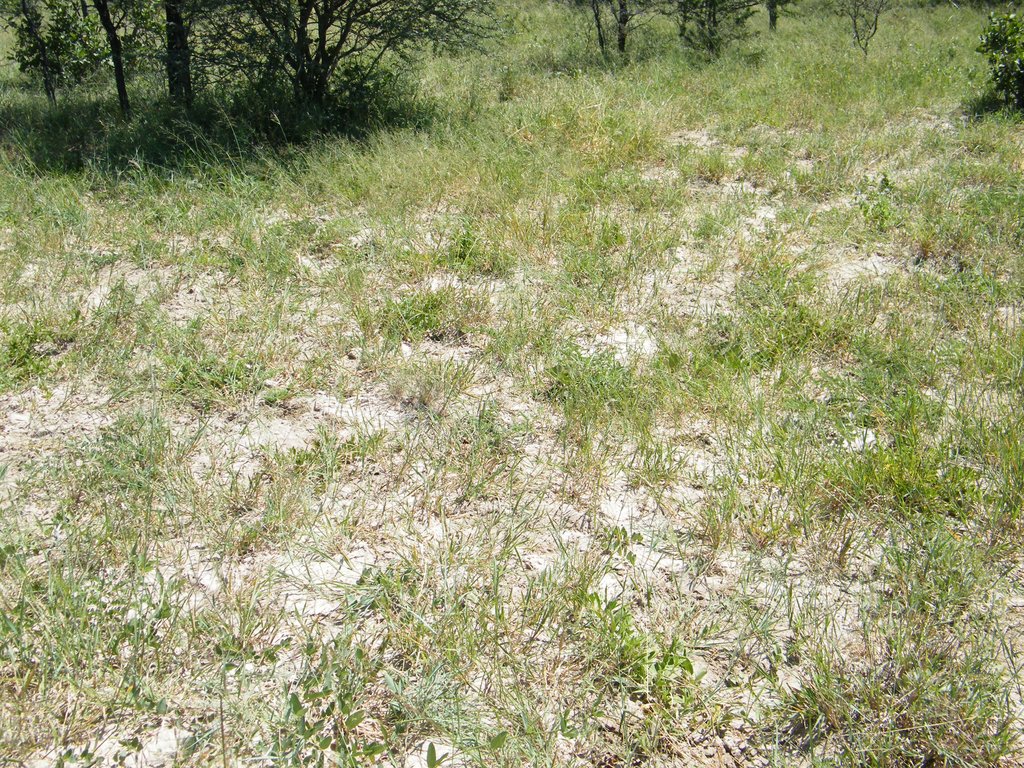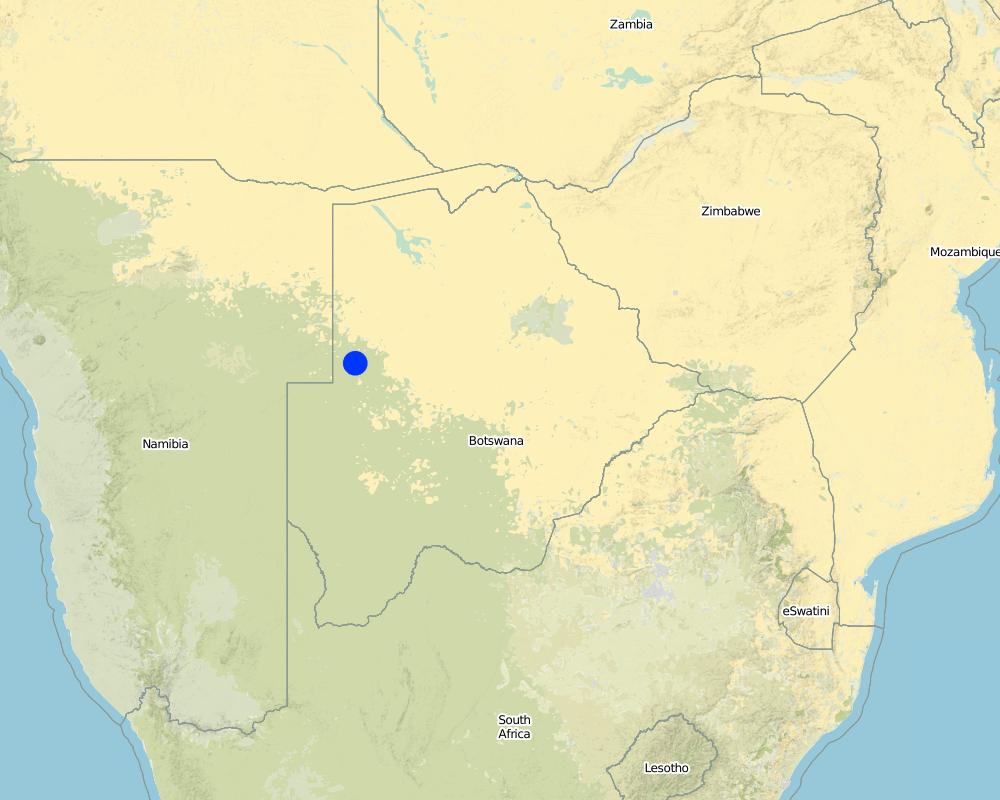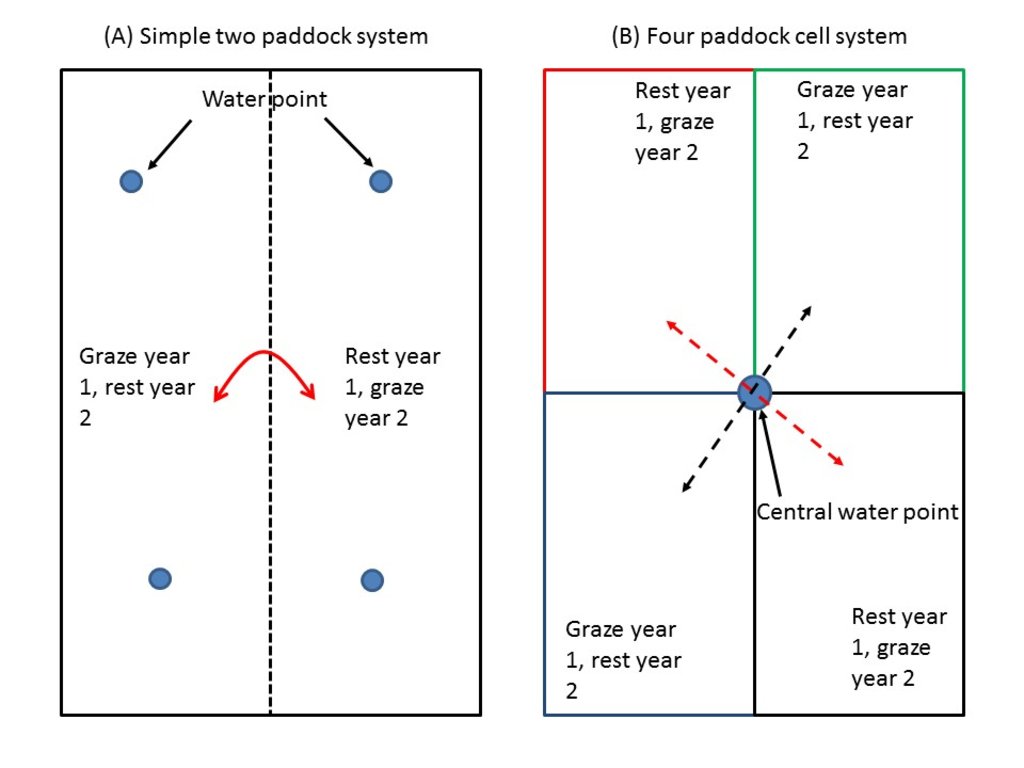Split Ranch Grazing Strategy [بوتسوانا]
- تاريخ الإنشاء:
- تحديث:
- جامع المعلومات: Richard Fynn
- المحرر: –
- المراجعون: Simone Verzandvoort, Rima Mekdaschi Studer
Riaan Dames Grazing Strategy
technologies_3217 - بوتسوانا
- Split Ranch Grazing Strategy: 10 أغسطس، 2018 (inactive)
- Split Ranch Grazing Strategy: 22 أكتوبر، 2018 (inactive)
- Split Ranch Grazing Strategy: 7 مارس، 2019 (inactive)
- Split Ranch Grazing Strategy: 13 مايو، 2018 (inactive)
- Split Ranch Grazing Strategy: 22 مايو، 2018 (inactive)
- Split Ranch Grazing Strategy: 23 مايو، 2018 (inactive)
- Split Ranch Grazing Strategy: 26 فبراير، 2018 (inactive)
- Split Ranch Grazing Strategy: 2 نوفمبر، 2021 (public)
- Split Ranch Grazing Strategy: 13 مايو، 2018 (inactive)
- Split Ranch Grazing Strategy: 19 يناير، 2018 (inactive)
عرض الأقسام
توسيع الكل طي الكل1. معلومات عامة
1.2 تفاصيل الاتصال بالأشخاص الرئيسيين لمصدر المعلومات والمؤسسات المشاركة في تقييم وتوثيق التقنية
الشخص (الأشخاص) الرئيسي لمصدر المعلومات
متخصص في الإدارة المستدامة للأراضي:
اسم المؤسسة (المؤسسات) التي سهلت توثيق/تقييم التقنية (إذا كان ذلك على صلة)
University of Botswana (University of Botswana) - بوتسوانا1.3 الشروط المتعلقة باستخدام البيانات الموثقة من خلال WOCAT
متى تم تجميع البيانات (ميدانيا)؟:
2017
يوافق جامع المعلومات والشخص (لاشخاص) الرئيسي لمصدر المعلومات على الشروط المتعلقة باستخدام البيانات الموثقة من خلال WOCAT:
نعم
1.4 إعلان بشأن استدامة التقنية الموصوفة
هل التقنية الموصوفة هنا تمثل مشكلة فيما يتعلق بتدهور الأراضي، بحيث لا يمكن إعلانها تقنية مستدامة لإدارة الأراضي؟:
كلا
2. وصف تقنيةالإدارة المستدامي للأراضي
2.1 وصف مختصر للتقنية
تعريف التقنية:
Split Ranch Grazing involves grazing half the available area for a full year - concentrating livestock. The consequent grazing pressure maintains the grassland in an immature, high-quality state, while resting the other half, allowing optimal recovery from the previous full years grazing. The technology is simple, requiring less fencing than more complex systems, without compromising sustainability or ecological function. These concepts can also be used for management in pastoral-wildlife systems to create habitat heterogeneity (short and tall grassland).
2.2 وصف تفصيلي للتقنية
الوصف:
The Split Ranch Grazing Strategy (SRG) was developed by Riaan Dames in the North West province, South Africa. It is fundamentally different to popular rotational management systems and contains several conceptual advances. One key difference is that SRG provides a full-year uninterrupted recovery period for rangeland after grazing. This enables grasses to maximize nutrient recovery over the main pulses of nutrient mineralization in the early wet season, and to maximize root growth and associated nutrient storage over the late wet season and early dry season - when most root growth occurs. Optimal recovery periods should ideally, therefore, encompass the full wet season and the early dry season. This contrasts with rotational grazing where recovery and grazing periods are apportioned across these two periods, with resting periods often not occurring in key periods of nutrient uptake and root growth.
A major problem with having both grazing and recovery periods in the same season is that grassland is able to mature during recovery periods, greatly reducing forage quality and grass growth rates, thereby negatively impacting animal production. Another problem is that complex rotational grazing requires strategies investing much in a complex and expensive fencing infrastructure. The solution is a fundamentally different strategy where some paddocks are grazed the whole year to prevent grassland maturation and other paddocks are simultaneously rested to optimize recovery. In addition, paddocks should be as few, and as large as possible, to maximize livestock access to functional resource heterogeneity, thereby improving adaptive foraging options, while reducing costs of fencing (fencing can even be replaced by using physical boundaries (e.g. roads, rivers, etc.) and herding the livestock.
Livestock are maintained in the grazing paddocks until mid-dry season to ensure that grasses in the rested paddocks have completed root growth and ceased all other growth – thus fully rested and recovered. A full years rest allows maximum uptake and storage of nutrients in deep, strong root systems and crowns. Thus when these grasses are grazed in the next season they have not only efficient root uptake of moisture and nutrients from the soil but also can re-allocate nutrients stored in roots to leaf production after each grazing event, resulting in a productive supply of high-quality fresh leaf to livestock over the growing season.
Movement of livestock into the year-long rested paddocks halfway through the dry season ensures that they have a large reserve of forage. Concentration of livestock on half the available area (half the paddocks are rested and the other half grazed) ensures sufficient grazing pressure to maintain grassland in an immature, high-quality and rapidly-growing state for maximizing forage quality, leaf production and livestock production, further enhanced by greater adaptive foraging options in large paddocks. The technology was started in North West province South Africa, and is now being taken up in Botswana and Namibia. A model example is Tiisa Kalahari Ranch in the Ghanzi region of Botswana. The ranch has been partitioned into several four-paddock cells, each with their own cattle herd. Cattle graze two paddocks while the other two are rested for a full year. Cattle enter the rested paddocks, which have developed a large reserve of forage, in the mid dry season (July) once forage is depleted in the two grazed paddocks. This technology (SRG), used on the award-winning Danielskuil ranch in South Africa, has been employed at Tiisa for six years after being in a degraded state. Indications are that the rangeland has been steadily recovering with increases in abundance of high-quality grasses. Monitoring programs are being established to monitor the trends in cover of the various grass species over time.
2.3 صور التقنية
2.4 فيديوهات عن التقنية
تعليقات، وصف موجز:
Tour of several ranches using the split ranch grazing strategy: April 2016, North West Province, South Africa. The video was compiled by Ibo Zimmerman.
See https://www.youtube.com/watch?v=9lOAr1RT69M
التاريخ:
2016
الموقع:
North West Province, South Africa
اسم مصور الفيديو:
Ibo Zimmerman
2.5 البلد/المنطقة/المواقع التي تم تنفيذ التقنية فيها والتي يغطيها هذا التقييم
البلد:
بوتسوانا
المنطقة/الولاية/المحافظة:
Ghanzi Province
مزيد من التفاصيل حول الموقع:
Ghanzi, Tiisa Kalahari Ranch
التعليقات:
Longitude: -21.60026 (decimal degrees)
Latitude: 21.48969
Map
×2.6 تاريخ التنفيذ
في حالة عدم معرفة السنة بالتحديد، يرجى الإشارة إلى التاريخ التقريبي:
- منذ أقل من 10 سنوات (مؤخرًا)
2.7 إدخال التقنية
- Through interaction with Riaan Dames
3. تصنيف تقنية الإدارة المستدامي للأراضي
3.1 الغرض الرئيسي ( الأغراض الرئيسية) للتقنية
- تحسين الإنتاج
- الحد من تدهور الأراضي ومنعه وعكسه
- الحفاظ على النظام البيئي
- حماية مستجمعات المياه / المناطق الواقعة في اتجاه مجرى النهر - مع تقنيات أخرى
- الحفاظ على/تحسين التنوع البيولوجي
- خلق أثر اقتصادي مفيد
3.2 نوع (أنواع) استخدام الأراضي الحالية حيث يتم تطبيق التقنية

أراضي الرعي
أراضي الرعي الواسع النطاق:
- رعي شبه مرتحل
- مربى ماشية محدد
الأنواع والمنتجات الحيوانية الرئيسية:
The technology can be used for ranching cattle, sheep or goats or using planned herding of these livestock types according to the key concepts outlined in the technology. Products would be meat, wool and to a lesser degree, milk.
3.3 مزيد من المعلومات حول استخدام الأراضي
إمدادات المياه للأرض التي يتم تنفيذ التقنية عليها:
- بعلية
التعليقات:
Mainly rainfed but some irrigation of improved pasture for dry season forage would be fine
عدد مواسم الزراعة في السنة:
- 1
حدد:
Mostly one growing season but can be in a bimodal rainfall region
كثافة الثروة الحيوانية (إذا كانت ذات صلة):
At conservative stocking rates to ensure that animals are able to remain in the planned grazed paddocks until the mid dry season. Stocking rate will depend upon the local rainfall and soils and associated grass production. 10-15ha/ LSU in semi-arid regions
3.4 مجموعةالإدارة المستدامة للأراضي التي تنتمي إليها هذه التقنية
- الرعي وإدارة المراعي
3.5 انتشار التقنية
حدد انتشار التقنية:
- منتشرة بالتساوي على مساحة
إذا كانت التقنية منتشرة بالتساوي على منطقة ما، فحدد المنطقة التقريبية المغطاة:
- 100-10 كم2
التعليقات:
Not restricted to any size of land - any size ranch
3.6 التدابير التقنية في مجال إلادارة المستدامة للأراضي

التدابير الإدارية
- M2: تغيير في مستوى الإدارة/الكثافة
- M4: تغيير كبير في توقيت الأنشطة
التعليقات:
It involves grazing management. Managing stocking rate and the time spent grazing or resting a paddock
3.7 الأنواع الرئيسية من تدهور الأراضي التي تناولتها التقنية

تآكل التربة بالمياه
- الوزن(Wt): فقدان التربة السطحية/تآكل السطح
- (Wg):الانجراف الخلجاني/ الخلجان

تآكل التربة الناتج عن الرياح
- (Et): فقدان التربة السطحية

التدهور البيولوجي
- (Bc): تناقص الغطاء النباتي
- (Bq): انخفاض الكمية/الكتلة الحيوية
- (Bs): انخفاض جودة وتركيبة الأنواع/التنوع
التعليقات:
Preventing undesirable changes in grass cover and composition
3.8 منع أو حد أو عكس تدهور الأراضي
تحديد هدف التقنية فيما يتعلق بتدهور الأراضي:
- منع تدهور الأراضي
- اصلاح/إعادة تأهيل الأراضي المتدهورة بشدة
التعليقات:
The key goals are to improve grass composition and cover, reduce soil erosion and to improve livestock production
4. المواصفات الفنية، وأنشطة التنفيذ، والمدخلات، والتكاليف
4.1 الرسم الفني للتقنية
4.2 المواصفات الفنية/شروحات الرسم الفني
SRG can be implemented as simply as dividing the ranch into two paddocks with livestock spending alternate years in each paddock (A) or the ranch can be divided up into several cells according to needs, such as having to separate breeding herds, bull herds and weaners (B). In scenario A it is important to ensure good water distribution in each paddock to ensure access to the whole paddock. This simple scenario (A) is ideal for rural development schemes owing to minimal infrastructure costs and is easy for rural communities to implement. Another advantage is that it gives livestock much greater adaptive foraging options. In scenario B a central water point provides a convenient way of changing the livestock between paddocks. The gates can be left open between diagonal paddocks to allow livestock freedom of access to either of the diagonal paddocks or they can be actively moved between diagonals during the grazing year according to the rancher’s decisions. If paddocks are extremely large then other water points should be provided across the paddocks to allow livestock even access to all parts of the paddock.
4.3 معلومات عامة بخصوص حساب المدخلات والتكاليف
حدد كيفية احتساب التكاليف والمدخلات:
- لكل وحدة تقنية
عملة أخرى/ عملة وطنية (حدد):
Pulla (BWP)
4.4 أنشطة التأسيس
| النشاط | نوع التدبير | التوقيت | |
|---|---|---|---|
| 1. | Building fences | بنيوية أو هيكلية | At the start |
| 2. | Digging Boreholes | بنيوية أو هيكلية | At the start |
| 3. | Setting up water reticulation and drinking troughs | بنيوية أو هيكلية | At the start |
| 4. | Buildling animal loading facilities | بنيوية أو هيكلية | At the start |
| 5. | Handling of livestock | إدارية | throughout the year |
4.5 التكاليف والمدخلات اللازمة للتأسيس
| تحديد المدخلات | الوحدة | الكمية | التكاليف لكل وحدة | إجمالي التكاليف لكل مدخل | % من التكاليف التي يتحملها مستخدمو الأراضي | |
|---|---|---|---|---|---|---|
| العمالة | Labourers | paddocks | 7,0 | 24000,0 | 168000,0 | 100,0 |
| معدات | Water trough, fitting and piping | paddocks | 7,0 | 8000,0 | 56000,0 | 100,0 |
| معدات | Solar pump | paddocks | 7,0 | 20000,0 | 140000,0 | 100,0 |
| معدات | Fencing | paddocks | 7,0 | 80000,0 | 560000,0 | 100,0 |
| معدات | Boreholes | paddocks | 7,0 | 20000,0 | 140000,0 | 100,0 |
| غير ذلك | Loading facilities | 1,0 | 30000,0 | 30000,0 | 100,0 | |
| إجمالي تكاليف إنشاء التقنية | 1094000,0 | |||||
4.6 الصيانة/الأنشطة المتكررة
| النشاط | نوع التدبير | التوقيت/الوتيرة | |
|---|---|---|---|
| 1. | Maintenance of fences | بنيوية أو هيكلية | Throughout |
| 2. | Maintenance of water pipes and pumps | بنيوية أو هيكلية | Throughout |
| 3. | Maintenance of vehicles | بنيوية أو هيكلية | Throughout |
| 4. | Animal handling | إدارية | Throughout |
| 5. | Supplementary feeding (if needed) | إدارية | dry season |
4.7 التكاليف والمدخلات اللازمة للصيانة/للأنشطة المتكررة (سنويًا)
| تحديد المدخلات | الوحدة | الكمية | التكاليف لكل وحدة | إجمالي التكاليف لكل مدخل | % من التكاليف التي يتحملها مستخدمو الأراضي | |
|---|---|---|---|---|---|---|
| المواد النباتية | supplementary feed | bale | 1,0 | 9,0 | 9,0 | 100,0 |
| إجمالي تكاليف صيانة التقنية | 9,0 | |||||
التعليقات:
Maintenance costs are difficult to quantify but mainly keeping the fences clear of brush and replacing poles !
Most of labour costs are probably assigned to this over a year !
Water reticulation also a cost. A cost of P5000/MTH would be a good estimate.
Bales of hay cost 7-9 USD in Botswana depending on availability.
4.8 أهم العوامل المؤثرة على التكاليف
قدم وصفا لأهم العوامل التي تؤثر على التكاليف:
Fencing and infrastructure have been shown to be major factors increasing establishment and maintenance costs and reducing profits. Thus SRG aims to reduce these costs by having fewer larger paddocks, which also has benefits for the animals. Another major cost is that of supplementary feeding, especially if forage is depleted during the dry season. This technology aims to ensure that a reserve of forage is created for the dry season, to overcome this. It also aims to improve the quality of forage during the wet season so that supplementary feeding is not needed for fertility improvement.
5. البيئة الطبيعية والبشرية
5.1 المناخ
هطول الأمطار السنوي
- < 250 مم
- 251- 500 ملم
- 501 - 750ملم
- 1,000-751 ملم
- 1,500-1,100 ملم
- 2,000-1,500 ملم
- 3,000-2,001 ملم
- 4,000-3,100 ملم
- > 4000 ملم
حدد متوسط هطول الأمطار السنوي (إذا كان معروفًا)، بالملليمتر:
432,00
المواصفات/التعليقات على هطول الأمطار:
While Split Ranch Grazing is mainly applied in semi-arid climates with a long dry season, the relevance of SRG is likely to increase with increasing rainfall because of the greater decline in forage quality as grassland matures in higher rainfall areas; hence the greater need to concentrate grazing pressure to prevent grassland maturation.
الإشارة إلى اسم محطة الأرصاد الجوية المرجعية المعنية:
Department of Meteorological Services, Botswana
المنطقة المناخية الزراعية
- شبه قاحلة
Can be operated in semi-arid, sub-humid or humid environments.
5.2 طوبوغرافيا
متوسط الانحدارات:
- مسطح (0-2%)
- بسيط (3-5%)
- معتدل (6-10%)
- متدحرج (11-15%)
- تلال (16-30%)
- شديدة الانحدار(31-60%)
- فائقة الانحدار (>60%)
التضاريس:
- هضاب/سهول
- أثلام مرتفعة
- المنحدرات الجبلية
- منحدرات التلال
- منحدرات في السفوح
- قاع الوادي
المنطقة الارتفاعية:
- 100-0 متر فوق سطح البحر
- 500-101 متر فوق سطح البحر
- 1,000-501 متر فوق سطح البحر
- 1,500-1,001 متر فوق سطح البحر
- 2,000-1,501 متر فوق سطح البحر
- 2,500-2,100 متر فوق سطح البحر
- 3,000-2,501 متر فوق سطح البحر
- 4,000-3,001 متر فوق سطح البحر
- > 4000 متر فوق سطح البحر
وضح ما إذا كانت التقنية مطبقة على وجه التحديد في:
- غير ذات صلة
التعليقات والمواصفات الإضافية بشأن التضاريس:
Any situation is appropriate
5.3 التربة
متوسط عمق التربة:
- ضحل جدًا (0-20 سم)
- ضحلة (21-50 سم)
- متوسطة العمق (51-80 سم)
- عميقة (81-120 سم)
- عميقة جدًا (> 120 سم)
قوام التربة (التربة السطحية):
- خشن / خفيف (رملي)
قوام التربة (> 20 سم تحت السطح):
- خشن / خفيف (رملي)
المواد العضوية في التربة السطحية:
- متوسطة (1-3%)
إذا كان متاحًا، قم بإرفاق وصف كامل للتربة أو تحديد المعلومات المتوفرة، على سبيل المثال نوع التربة، الرقم الهيدروجيني/ درجة حموضة التربة، قدرة التبادل الكاتيوني، النيتروجين، الملوحة وما إلى ذلك.
The ranch has deep Kalahari sands in some sections and shallow rocky soils on calcrete in other sections. Nevertheless the technology is appropriate for any soil type
5.4 توافر المياه ونوعيتها
منسوب المياه الجوفية:
< 5 م
توافر المياه السطحية:
جيد
نوعية المياه (غير المعالجة):
مياه شرب جيدة
هل تعتبر ملوحة الماء مشكلة؟:
كلا
هل تحدث فيضانات في المنطقة؟:
كلا
5.5 التنوع البيولوجي
تنوع الأنواع:
- متوسط
تنوع الموائل:
- متوسط
5.6 خصائص مستخدمي الأراضي الذين يطبقون التقنية
مستقر أو مرتحل:
- غير المترحل
- شبه مرتحل
التوجه السوقي لنظام الإنتاج:
- تجاري/سوق
الدخل من خارج المزرعة:
- أقل من % 10من كامل الدخل
المستوى النسبي للثروة:
- متوسط
أفراداً أو مجموعات:
- فرد/أسرة معيشية
مستوى المكننة:
- ميكانيكية/ مزودة بمحرك
الجنس:
- رجال
عمر مستخدمي الأرضي:
- متوسط العمر
اذكر الخصائص الأخرى ذات الصلة لمستخدمي الأراضي:
The technology can be applied under commercial ranching situations using fenced paddocks to control the spatial and temporal distribution of livestock or it can be applied by semi-nomadic pastoralists using planned herding to control the spatial and temporal distribution of livestock.
5.7 متوسط مساحة الأرض المملوكة أو المستأجرة من قبل مستخدمي الأراضي الذين يطبقون التقنية
- < 0.5 هكتارا
- 0.5 - 1 هكتار
- 1 -2 هكتار
- 2 - 5 هكتار
- 5 - 15 هكتار
- 15 - 50 هكتار
- 50 - 100هكتار
- 500-100 هكتار
- 1,000-500 هكتار
- 10,000-1,000 هكتار
- > 10,000 هكتار
هل يعتبر هذا نطاقًا صغيرًا أو متوسطًا أو واسعا (في إشارة إلى السياق المحلي)؟:
- على نطاق متوسط
5.8 ملكية الأراضي، وحقوق استخدام الأراضي، وحقوق استخدام المياه
ملكية الارض:
- فردية، يوجد سند ملكية
حقوق استخدام الأراضي:
- فردي
حقوق استخدام المياه:
- فردي
5.9 الوصول إلى الخدمات والبنية التحتية
الصحة:
- ضعيف
- معتدل
- جيد
التعليم:
- ضعيف
- معتدل
- جيد
المساعدة التقنية:
- ضعيف
- معتدل
- جيد
العمل (على سبيل المثال خارج المزرعة):
- ضعيف
- معتدل
- جيد
الأسواق:
- ضعيف
- معتدل
- جيد
الطاقة:
- ضعيف
- معتدل
- جيد
الطرق والنقل:
- ضعيف
- معتدل
- جيد
مياه الشرب وخدمات الصرف الصحي:
- ضعيف
- معتدل
- جيد
الخدمات المالية:
- ضعيف
- معتدل
- جيد
6. الآثار والتصريحات الختامية
6.1 الآثار التي أظهرتها التقنية في الموقع
الآثار الاجتماعية والاقتصادية
الإنتاج
إنتاج الأعلاف
التعليقات/ حدد:
For details see:
Fynn, R.W.S. Kirkman, K & Dames, R. (2017).
جودة العلف
التعليقات/ حدد:
Forage quality improved by keeping the grass in an immature state. For details see:
Fynn, R.W.S. Kirkman, K & Dames, R. (2017).
إنتاج حيواني
التعليقات/ حدد:
Benefit from improved forage quality and larger spatial scales for adaptive foraging. For detail see:
Fynn, R.W.S. Kirkman, K & Dames, R. (2017).
الآثار الايكولوجية
دورة المياه / الجريان السطحي
كمية المياه
التعليقات/ حدد:
Better soil cover and protection
جودة المياه
التعليقات/ حدد:
Better soil cover and protection
الجريان السطحي
التعليقات/ حدد:
Better soil cover and protection
التنوع البيولوجي: الغطاء النباتي، الحيوانات
الغطاء النباتي
الكتلة الحيوية/ طبقة الكربون فوق التربة
تنوع الموائل
6.2 الآثار التي أظهرتها التقنية خارج الموقع
تدفقات مائية موثوقة ومستقرة في موسم الجفاف
التعليقات/ حدد:
Better grass cover should improve water capture and stream flow
الفيضان في اتجاه مجرى النهر
التعليقات/ حدد:
Better grass cover should reduce runoff rates and downstream flooding
تراكم الطمي باتجاه مصب النهر
التعليقات/ حدد:
Better grass cover should reduce runoff and erosion rates thereby reducing downstream siltation
6.4 تحليل التكلفة والعائد
كيف يمكن مقارنة العوائد نسبة لتكاليف الإنشاء (من وجهة نظر مستخدمي الأراضي)؟
عوائد قصيرة الأجل:
إيجابي
عوائد طويلة الأجل:
إيجابي
كيف تتم مقارنة العوائدمع كلفة الصيانة/التكاليف المتكررة (من وجهة نظر مستخدمي الأراضي)؟
عوائد قصيرة الأجل:
إيجابي
عوائد طويلة الأجل:
إيجابي
التعليقات:
This technology aims to reduce infrastructure and maintenance costs by reducing the amount of fencing. It also aims to reduce reliance on supplementary feeding.
6.5 اعتماد التقنية
- 1-10%
إذا كان متاحًا، قم بتحديد الكمية (عدد الأسر المعيشية و/أو المساحةالمغطاة):
In Ghanzi region of Botswana probably about five ranchers have adopted the technology
من بين جميع الذين تبنوا التقنية، كم عدد الذين فعلوا ذلك بشكل تلقائي، أي دون تلقي أي حوافز مادية/مدفوعات؟:
- 100-90%
التعليقات:
They have adopted the technology because of seeing the results of those using the technology and from farmers day talks
6.6 التكيف
هل تم تعديل التقنية مؤخرًا لتتكيف مع الظروف المتغيرة؟:
كلا
6.7 نقاط القوة / المزايا / الفرص التي توفرها التقنية
| نقاط القوة/ المزايا/ الفرص من وجهة نظر مستخدمي الأراضي |
|---|
|
Management complexity is reduced - fewer paddocks and less frequent movement between paddocks. |
| Establishment and maintenance costs are lower than complex rotational grazing systems owing to less fencing required. Livestock production increased relative to costs. |
| Need for supplementary feed and mineral licks reduced owing to livestock having greater adaptive foraging options. |
| Rangeland condition improved. |
| Rangeland condition improved - better grass cover and greater abundance of high-quality perennial grasses. |
| نقاط القوة/ المزايا/ الفرص من وجهة نظر جامع المعلومات أو غيره من الاشخاص الرئيسيين لمصدر المعلومات |
|---|
|
Conceptually the most robust grazing management technology: Extremely long recovery periods promotes sustainability |
| Low establishment and maintenance costs relative to production. |
| Concentration of livestock on half the available area enables sufficient grazing pressure to prevent grassland maturation and loss of forage quality |
| Development of a large reserve of forage for the dry season through season long resting promotes stability and reduces needs for supplementary feeding (increased profits). |
| Very large paddocks combined with minimal forced movement of livestock promotes adaptive foraging options for livestock thereby reducing need for supplementary feeding and licks (increased profits). |
6.8 نقاط ضعف / مساوىء / مخاطر التقنية وسبل التغلب عليها
| نقاط الضعف/ المساوىء/ المخاطر من وجهة نظر مستخدم الأراضي | كيف يمكن التغلب عليها؟ |
|---|---|
| Less intensive management increases predation events on livestock. | Herding of livestock. |
| نقاط الضعف/ المساوىء/ المخاطر من وجهة نظر جامع المعلومات أو غيره من الاشخاص الرئيسيين لمصدر المعلومات | كيف يمكن التغلب عليها؟ |
|---|---|
|
Potential over/under use of certain habitat type. Less control of timing and intensity of grazing distribution could result in damage to sensitive habitat types. |
Monitoring by the rancher of impacts on vegetation and use of water point reticulation/ lick placement/herding to move animals to underutilized areas. |
7. المراجع والروابط
7.1 طرق جمع/مصادر المعلومات
- زيارات ميدانية، مسوحات ميدانية
Many trips to Tiisa ranch to conduct monitoring work
- مقابلات مع مستخدمي الأراضي
Have spoken to several land owners using the technology
- مقابلات مع المتخصصين/الخبراء في الإدارة المستدامة للأراضي
Have had much interaction with Riaan Dames who developed the technology
7.2 المراجع للمنشورات المتاحة
العنوان، المؤلف، السنة، النظام القياسي الدولي لترقيم الكتب ISBN:
Optimal grazing management strategies: Evaluating key concepts Fynn, R.W.S., Kirkman, K.P. and Dames, R. 2017. African Journal of Range and Forage Science 34 (2): 87-98
متاح من أين؟كم التكلفة؟:
Taylor and Francis Publishers
العنوان، المؤلف، السنة، النظام القياسي الدولي لترقيم الكتب ISBN:
Towards optimal rangeland management. Fynn, R.W.S. 2015. Farmers Weekly 18: 56-59
متاح من أين؟كم التكلفة؟:
Farmers weekly magazine
7.3 روابط للمعلومات ذات الصلة المتوفرة على الإنترنت
العنوان/الوصف:
Grazing Strategy of Riaan Dames
عنوان الرابط URL:
https://www.youtube.com/watch?v=9lOAr1RT69M
الروابط والوحدات المواضيعية
توسيع الكل طي الكلالروابط
لا يوجد روابط
الوحدات المواضيعية
لا يوجد وحدات مواضيعية






